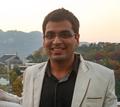Cited By
View all- Aversano LIammarino MMancino IMontano D(2024)A systematic review on artificial intelligence approaches for smart health devicesPeerJ Computer Science10.7717/peerj-cs.223210(e2232)Online publication date: 21-Oct-2024
- Tripathi GSabherwal MSingh P(2024)“I know I have this till my Last Breath”: Unmasking the Gaps in Chronic Obstructive Pulmonary Disease (COPD) Care in IndiaProceedings of the 2024 CHI Conference on Human Factors in Computing Systems10.1145/3613904.3642504(1-16)Online publication date: 11-May-2024
- Bhatia ASaini AKalra IMukherjee MParnami AWard JMcGill MMarky K(2023)DUMask: A Discrete and Unobtrusive Mask-Based Interface for Facial GesturesProceedings of the Augmented Humans International Conference 202310.1145/3582700.3582726(255-266)Online publication date: 12-Mar-2023





